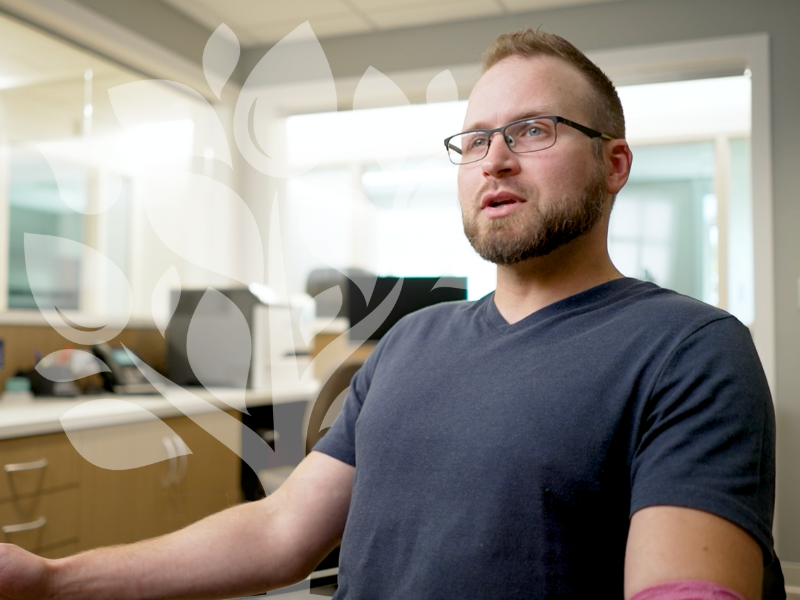Understanding Von Willebrand Disease
Von Willebrand Disease (vWD) is one of the most common hereditary bleeding disorders, affecting both men and women equally. It occurs due to a deficiency or dysfunction of von Willebrand factor (vWF), a protein crucial for blood clotting. There are three main types of VWD – Type 1, Type 2, and Type 3 – each representing different severities of the factor deficiency. Common symptoms include frequent nosebleeds, easy bruising, prolonged bleeding after surgery or dental work, and heavy menstrual periods in persons who menstruate, which can lead to iron deficiency anemia.
Current Standard Treatments for Von Willebrand Disease
Managing VWD effectively is vital to prevent bleeding complications and maintain a normal lifestyle. Treatment strategies vary depending on the type and severity of the condition. For most cases, mainly those with Type 1 and some subtypes of Type 2, desmopressin (DDAVP) is the cornerstone treatment. This synthetic hormone, administered via intravenous infusion, subQ injection or intranasally, stimulates the release of vWF stored in the body. If DDAVP is ineffective or contraindicated, VWF concentrates are used to replace the deficient clotting factor directly. Antifibrinolytic medications may also be prescribed to prevent the breakdown of blood clots, and oral contraceptives can help reduce menstrual bleeding in people who menstruate.

Advanced and Emerging Treatments for Von Willebrand Disease
Recent advancements in the understanding and treatment of vWD are promising, bringing hope for more effective and convenient options beyond traditional therapies:
- Recombinant vWF Products
Traditional VWF concentrates are derived from human plasma, which can pose risks of allergic reactions and infections. Recombinant VWF products are developed using DNA technology in laboratory settings, ensuring a purer and safer product. These synthetic agents are not derived from human plasma, thus reducing the risk of contamination and immune responses. Recombinant VWF has been refined to improve its efficacy and stability, allowing for more consistent dosing and reducing the frequency of infusions. These advancements make recombinant VWF a valuable option for patients who have developed antibodies to plasma-derived VWF or those who prefer non-plasma-derived treatments although this is not a suitable treatment for patients that also have low FVIII levels, which can happen in patients, especially those with Type 2 and Type 3. Clinical studies have demonstrated the effectiveness of recombinant VWF in managing bleeding episodes and providing prophylactic therapy. - Novel Non-Plasma-Derived Therapies
These therapies aim to offer a more stable and controlled treatment option. One promising approach involves the use of monoclonal antibodies that can mimic FVIII activity. These antibodies can be designed to bind to specific sites on platelets or endothelial cells, promoting clot formation more effectively. Another innovative therapy under investigation is the development of small molecules that can stabilize VWF or enhance its interaction with other clotting factors. These novel therapies have the potential to provide more precise control over bleeding episodes, reduce the frequency of treatments, and improve the overall quality of life for patients with VWD. - Gene Editing Techniques
Beyond traditional gene therapy, advanced gene editing techniques like CRISPR-Cas9 are being explored for their potential to precisely correct genetic mutations in the VWF gene. CRISPR-Cas9 is a powerful tool that allows scientists to target and modify specific DNA sequences within the genome. In the context of VWD, gene editing could be used to correct the defective VWF gene directly in the patient’s cells, potentially offering a permanent cure. While still in the early research phases, preclinical studies have shown promising results in animal models. Gene editing holds immense promise for the future of VWD treatment, but it also raises ethical and safety considerations that need to be addressed before it can become a widely available therapy. - Personalized Medicine
Advances in genetic research and data analysis are paving the way for personalized treatment plans tailored to individual patients’ genetic profiles. Personalized medicine involves analyzing a patient’s specific genetic mutations, clotting factor levels, and response to different treatments. This information is used to develop a customized treatment plan that optimizes efficacy and minimizes side effects. For example, patients with certain genetic variations may respond better to specific types of VWF concentrates or dosing regimens. Personalized medicine also incorporates pharmacogenomics, which studies how a patient’s genetic makeup influences their response to medications. By tailoring treatments to each patient’s unique genetic profile, personalized medicine aims to improve clinical outcomes and enhance the overall management of VWD.
Managing Severe Cases: Focus on Type 3 Von Willebrand Disease
Type 3 VWD is the most severe form, characterized by a near-total absence of von Willebrand factor and FVIII, leading to significant and potentially life-threatening bleeding episodes. Management may involve regular prophylactic treatment with VWF concentrates to prevent bleeding. These concentrates, derived from human plasma and treated for safety, are often required in higher doses, especially before invasive procedures or surgeries. Regular follow-ups with a hematologist are crucial for effective management.

Prognosis and Quality of Life
With proper diagnosis and treatment, individuals with VWD can lead full and active lives. Regular monitoring and treatment adjustments are essential, particularly during life events such as surgery, pregnancy, or dental work. Patient education and support play a significant role in improving the quality of life, helping individuals recognize signs of bleeding and manage their symptoms effectively.
Global Efforts in VWD Awareness and Treatment
Increasing global awareness about VWD is critical. International healthcare organizations and patient advocacy groups are working to improve diagnosis rates and treatment accessibility worldwide, providing educational resources and support for patients and healthcare providers.
Conclusion
Advances in the treatment and management of VWD offer hope to those affected by this condition. From improved diagnostic tools to innovative therapies, the outlook for patients with VWD is better than ever before. Staying informed about the latest treatment options and engaging actively with healthcare providers can help tailor treatment plans to individual needs.If you or someone you know is living with VWD, seek guidance from a healthcare provider specializing in blood disorders. For those in the Green Bay or Wausau areas, consider visiting Hemophilia Outreach Center for specialized care. Learn more about our services and how we can help at our Green Bay location here and our Wausau location here. For a detailed overview of what we treat, visit our “What We Treat” page here.




